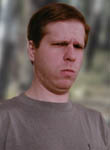|
|
This topic comprises 2 pages: 1 2
|
|
Author
|
Topic: First Lossless DTS Install Completed
|
Mark Gulbrandsen
Resident Trollmaster

Posts: 16657
From: Music City
Registered: Jun 99
|
 posted 06-02-2004 07:03 PM
posted 06-02-2004 07:03 PM




Engineering personel from DTS and CLACO Equipment have installed the very first lossless DTS digital playback system in the world at The Museum of Ancient Life in Lehi, Utah . The museum not wanting to be outdone in any area removed an Iwerks 8/70 system about 1 year ago in favor of a much higher quality CDC 15/70 3D projection system. The new DTS lossless playback system is a remarkable improvement over conventional digital audio playback which the museum had been utilizing and will now give other local venues stiff competition in the area of sound quality. I would encourage anyone that happens to be in the Salt Lake City area to stop by there and listen to this incredible new playback system.
DTS Press release follows.......
March 22, 2004 DTS Announces Lossless Digital Sound For Cinema
New Technology Delivers Lossless Soundtracks Identical to Master Tracks
PR for: DTS Cinema
DTS (Digital Theater Systems, Inc.) (NASDAQ: DTSI) announces the development of a system for delivering lossless digital soundtracks into movie theatres. With DTS lossless technology, a soundtrack played in the cinema is bit-for-bit identical to the original master. Demonstrations of the system to distributors and exhibitors will take place during 2nd quarter 2004.
DTS lossless technology works with all film specifications used in exhibition, including 16mm, 35mm, 70mm and any pulldown or frame rates, as well as digital pre-show, alternate content and digital cinema sources. Sampling rates include 44.1, 48, and 96 kHz at 16 to 24 bits.
DTS lossless coding is made possible by a new extension to the DTS Coherent Acoustics codec, which is used in applications including home theatre, car audio, PC and game console products, DVD-related software and broadcast. With this new development, Coherent Acoustics is able to offer a single, comprehensive system that can deliver quality levels from Internet streaming up to high definition and lossless.
“DTS lossless technology delivers the only audio for standard film equivalent to the best sound that has been proposed for Digital Cinema to date. Because of our unique timecode system, we are the only format that is capable of delivering this,” said Mike Archer, Director of Cinema at DTS. “The introduction of this technology continues DTS’ tradition of leadership in digital audio for the entertainment industry.”
About DTS Cinema Division
A preferred digital sound format on more than 20,000 screens in 99 countries, DTS quickly became a leading provider of premium, discrete, multi-channel audio for motion pictures after the release of Steven Spielberg’s Jurassic Park. Since 1993, the company’s award-winning CD-ROM-based technology has set a standard for digital audio delivery in cinemas and special venues. In addition to supplying movie theaters with hardware solutions, DTS also licenses its technologies for filmed content, with DTS digital sound now featured on nearly 100 percent of films released by all major Hollywood studios.
[ 06-03-2004, 08:47 AM: Message edited by: Mark Gulbrandsen ]
| IP: Logged
|
|
|
|
|
|
Phil Hill
I love my cootie bug
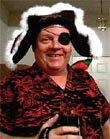
Posts: 7595
From: Hollywood, CA USA
Registered: Mar 2000
|
 posted 06-02-2004 08:49 PM
posted 06-02-2004 08:49 PM



Gosh John, I thought I was pretty clear... ![[Wink]](wink.gif)
Some customers are good, savvy and in-tune and some are... well ya just gotta deal with them all... Been there, done that. ![[beer]](graemlins/beer.gif)
Don't know if the original "people" are still around there, but they sure were cheap-ass, uninformed jerks back then. ![[Razz]](tongue.gif)
In the proposal/contract, they kept deleting and cutting-back projection systems, audio systems, etc... you know, the standard system "features" and then bitched when things were not included/installed cuz of their choices. It was a clear case of wanting something for nothing.
>>> Phil
| IP: Logged
|
|
|
|
|
|
|
|
|
|
|
|
|
|
|
|
|
|
|
|
Jeffry L. Johnson
Jedi Master Film Handler
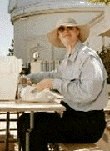
Posts: 809
From: Cleveland, Ohio, USA
Registered: Apr 2000
|
 posted 06-05-2004 11:09 AM
posted 06-05-2004 11:09 AM





IMAX Film Format quote:
The IMAX digital sound system was developed by Sonics Associates of Birmingham, Alabama. In 1988, Lynn McCroskey and Jim Cawhon developed a Digital Disc Playback system (DDP) that recorded 2 channels of uncompressed digital sound on an audio compact disc. This system with 3 discs and 6 channels began to replace the multitrack magnetic tape sound systems used in IMAX theaters since 1971. In 1993, Sonic introduced the IMAX 3D sound system with 10 channels for the Sony IMAX theater in New York. Theater speakers produce 8 channels from 4 CD disks synchronized with the15-perforation 70 mm filmstrip running through the projector horizontally past a 15,000-watt lamp at 48 frames per second. The 3D headset has 2 additional channels for the binaural Personal Sound Environment (PSE). "Binaural sound emanates from the headsets' two small speakers, just above and slightly in front of your ears; they cover all but the frequencies below 100 Hz. Low bass is handled by a pair of subwoofers behind the giant screen. Four full-range speakers, also behind the screen, keep sounds tied solidly to the
IMAX 3D headset from Sonics
film's images even if you turn your head; if you have trouble imaging binaurally (as some people do), these speakers will prevent front sounds from seeming to come from the sides or rear. Two more speakers, in the rear of the theater, carry only surround ambience; the headset's binaural speakers carry sounds that are supposed to originate behind you. Eight channels of an 18,000-watt, 10-channel amplification system feed the speakers; the other two channels feed the binaural signals to the headsets. These amps are fed from four audio CDs, computer-synchronized with one another and with the projectors. The headsets can receive four separate soundtracks, so a movie could be presented in different languages simultaneously if the theater provides enough channels." (quote from Ivan Berger)
Lynn McCroskey is President and CEO of Sonics Associates, a subsidiary of Toronto's IMAX Corporation. In an interview with Millimeter magazine, he explained the difference between the IMAX sound system and the surround systems in conventional theaters: "The typical IMAX screen is close to a conventional 4:3 aspect ratio, but much, much bigger. So you have a great deal of vertical, which gives you the opportunity to do a 'voice-of-God' loudspeaker." Another difference is the use of point-source surround, as opposed to the multiple small surround speakers used in conventional theaters. "Conventional rooms," McCroskey says, "come in so many different shapes that it is nearly impossible for them to make point-source surround work." Overall IMAX system power varies depending on the size of the room, but it is typically in the range of 12,500 watts. "The power is not there for the loudness," McCroskey says. "It's there for clarity and freedom from distortion." The enclosures are three-way systems using components custom-designed and manufactured to Sonics' specifications. Sonics combines four low-frequency loudspeakers in each cabinet with nested high- and mid-frequency horns. McCroskey points out the trapezoidal dispersion pattern (narrower at the top than the bottom), designed to match the distinctive shape of IMAX theaters. Using a sub-bass system for the deepest lows, McCroskey says, minimizes phase coherence problems. "In most installations, we use eight sub-bass loudspeakers, each in a 16-cubic-foot enclosure," he says. "The enclosures include a filtering labyrinth we designed that physically traps the higher-frequency components that can otherwise cause overtones and distortion."
Omniverum in Hague Netherlands
Another distinction between IMAX and other theater surround systems is that Sonics uses no digital audio data compression. Both the DDP and DTAC lines are full fidelity, "double-system" approaches, meaning that the sound is not recorded on the film itself. "DDP uses three CD-Audio discs with a patented sample-accurate playback synchronization system," McCroskey says. DTAC, the company's newest system, plays back audio files either from DVD-ROM or from a built-in hard disk. In some older IMAX theaters, the original 35mm six-track, full-coat mag-sound system used from 1971 through 1988 is still in place. "These days most soundtracks are produced in digital formats," McCroskey says. "They are usually sent in on TASCAM DA-88, and we transfer to whatever format is needed for the theaters where the film will play. On Everest, for instance, we created both DDP and DTAC discs." Everest was the first IMAX film where the final mix was done on location in an IMAX theater, the Irvine Spectrum. That meant the mixers did not have to make several rounds of notes while watching the film and then implement changes back at the EFX dub stage. But they did have to set up facilities in a working theater that was not available until 10 at night (after the day's last screening). They worked from a 24-track premix made at EFX with six tracks each for effects, backgrounds, and music; three for Foley; and one each for narration, voice-overs, and dialog. EFX made a discrete premix to 24 tracks: six each for effects, backgrounds, and music; three for Foley; and one each for narration, voice-overs, and dialog. (quote from Millimeter article by Philip De Lancie)
| IP: Logged
|
|
John Hawkinson
Film God
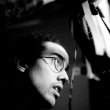
Posts: 2273
From: Cambridge, MA, USA
Registered: Feb 2002
|
 posted 06-05-2004 03:20 PM
posted 06-05-2004 03:20 PM




Mark Marshall asks, "Is the lossless system software just an updated "dts.exe" file, or is there more to it than that?"
The new-generation DTS equipment (XD10 and CSS (captioning), etc.) don't run DOS anymore, they run Linux. Software for them is much more than simply a DTS.EXE file, it is really an entire operating system.
For the CSS unit, there's a small ~800k executable that handles the captioning work, and there's a mechanism to automatically copy new versions off of Mopix CDROMs. That executable communicates with a loadable kernel module that interfaces with the timecode board.
I imagine there is a similar architecture used in the XD10, but there's no reason it has to be restricted to a few files. For special applications, one could imagine all sorts of changes they might make in a special case.
It's easy for me to understand why there's an NDA, though. Because the operating system provides a much greater degree of access if a user plugs in a keyboard and monitor, it is much easier for someone to "get inside" and reverse engineer or examine trade secrets. From DTS's perspective, that has to be a serious downside to their open architecture.
--jhawk
| IP: Logged
|
|
|
|
All times are Central (GMT -6:00)
|
This topic comprises 2 pages: 1 2
|
Powered by Infopop Corporation
UBB.classicTM
6.3.1.2
The Film-Tech Forums are designed for various members related to the cinema industry to express their opinions, viewpoints and testimonials on various products, services and events based upon speculation, personal knowledge and factual information through use, therefore all views represented here allow no liability upon the publishers of this web site and the owners of said views assume no liability for any ill will resulting from these postings. The posts made here are for educational as well as entertainment purposes and as such anyone viewing this portion of the website must accept these views as statements of the author of that opinion
and agrees to release the authors from any and all liability.
|

 Home
Home
 Products
Products
 Store
Store
 Forum
Forum
 Warehouse
Warehouse
 Contact Us
Contact Us




 Printer-friendly view of this topic
Printer-friendly view of this topic








![[Wink]](wink.gif)
![[beer]](graemlins/beer.gif)
![[Razz]](tongue.gif)

![[thumbsup]](graemlins/thumbsup.gif) ) I do know that the sound system is only 5 channel.
) I do know that the sound system is only 5 channel.

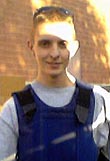
![[Smile]](smile.gif) is incredible. And with a new software upgrade coming soon among other things... I hope it will get even better (if possible).
is incredible. And with a new software upgrade coming soon among other things... I hope it will get even better (if possible).